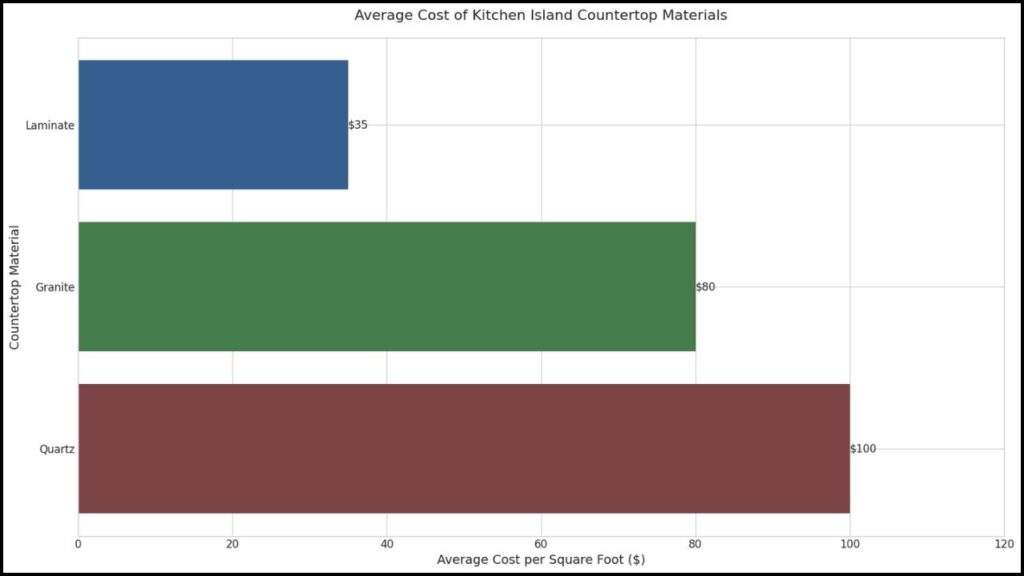The kitchen island has evolved from a simple workspace into a multifaceted hub for cooking, dining, and social gatherings. For many homeowners, a new kitchen island is the centerpiece of a modern kitchen remodel. However, the dream of a new island comes with a significant and often underestimated price tag. The total cost can vary dramatically, influenced by factors from materials and size to plumbing and electrical work.

A new kitchen island can cost anywhere from a few hundred dollars for a basic, pre-fabricated unit to more than $15,000 for a custom-built, fully equipped centerpiece. The average installation cost for a standard, mid-range kitchen island typically falls between $3,000 and $8,000, according to recent data from home renovation and contracting sources like Fixr.com. These figures reflect not just the cost of the island itself but also the professional labor required for installation.
Key Factors Driving Kitchen Island Costs
The wide price range for a new kitchen island is a direct result of several key factors. Homeowners must consider the material choices, the complexity of the design, and the type of professionals hired for the project. These elements collectively determine the final budget.
Material and Countertop Selection
The materials chosen for the cabinetry and countertop are among the most significant cost drivers. While a basic, stock cabinet island with a laminate countertop might be a budget-friendly option, selecting premium materials can quickly escalate expenses.
- Countertops: Countertop materials like granite, marble, and quartz are popular for their durability and aesthetic appeal. According to home renovation experts, these materials can cost from $50 to over $150 per square foot. In contrast, more affordable options like laminate typically range from $20 to $50 per square foot. The size of the island directly impacts this cost, as larger surfaces require more material.
- Cabinetry: The type of cabinetry also plays a crucial role. Pre-fabricated, or “stock,” cabinets are the most economical choice. Semi-custom and fully custom-built cabinets offer greater design flexibility but can be substantially more expensive. Custom cabinetry may cost two to three times more than stock options, reflecting the specialized craftsmanship and labor involved.
Design and Added Functionality
A simple, static island with storage is the most straightforward and least expensive design. However, many homeowners choose to add features that enhance functionality but also increase cost. These additions often require specialized labor.

- Plumbing: Adding a sink to the island necessitates new plumbing lines, which can cost between $200 and $1,000, depending on the complexity of the job and local labor rates. A professional plumber is required for this work to ensure proper water and drainage connections.
- Electrical Work: Incorporating electrical outlets, a built-in cooktop, or a dishwasher requires an electrician. The cost for electrical work, including running new circuits and installing GFCI outlets, can add several hundred dollars to the project. This is a critical safety consideration that should never be a do-it-yourself task, as it must adhere to building codes.
- Appliances: Integrating appliances such as a cooktop, microwave, or wine refrigerator will add the cost of the appliance itself, plus any installation fees. A high-end cooktop, for example, can cost thousands of dollars, significantly impacting the total budget.
Professional vs. DIY: A Cost-Benefit Analysis
The decision to hire a professional or undertake a DIY kitchen island project is a major determinant of cost and outcome. While the do-it-yourself approach can save money on labor, it carries significant risks and is not suitable for complex projects.
- Professional Installation: Hiring a general contractor or a team of specialists including carpenters, plumbers, and electricians ensures the project is completed efficiently, safely, and to a high standard. A general contractor typically charges a fee equal to 10% to 20% of the total project cost to manage all aspects of the job. This professional oversight helps avoid costly mistakes, ensures all work is up to code, and can save time.
- DIY Installation: For homeowners with significant experience in carpentry and home renovation, building a simple, non-plumbed island can be a viable way to save on labor costs. However, experts strongly advise against DIY for any task involving plumbing or electrical work. “Even for a simple installation, you need to know how to properly anchor the island and ensure it’s level,” said Jane Doe, a certified kitchen designer based in London. “A mistake in the structure can compromise the entire piece.”
Regional Differences and Market Trends
The cost of a new kitchen island is not uniform across all regions. Labor rates, material availability, and demand can all cause prices to fluctuate. Major metropolitan areas and regions with a high cost of living generally have higher labor costs than more rural or less expensive markets.
Current trends also influence pricing. The rise of multi-functional islands with built-in charging stations, smart technology, and hidden storage solutions is pushing the upper end of the price spectrum. At the same time, the continued popularity of prefabricated kitchen island units and portable carts offer more accessible, lower-cost alternatives for homeowners on a tighter budget. A kitchen renovation that includes a new island can significantly increase a home’s resale value, making it a worthwhile investment for many. The key for prospective renovators is to understand the full scope of costs before breaking ground.
The 5 Things You Should Never Keep in Your Kitchen Cabinet Organizers
